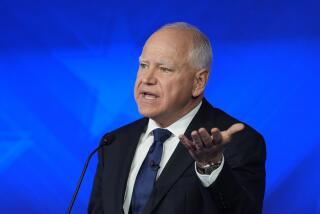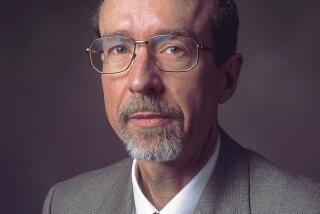‘Tiananmen Square Massacre’: a Chilling Game of Semantics
TOKYO — As Washington and Beijing move toward an exchange of visits in the next two years between President Clinton and Chinese President Jiang Zemin, Americans will hear lots of talk about the 1989 crackdown on pro-democracy protesters in Beijing.
That event was seared into the American consciousness as the “Tiananmen Square massacre.” In a night of terror, the Chinese army shot its way into Beijing against the unarmed resistance of the city’s citizens, ending seven weeks of protests.
About 1,000 to 1,500 people died, mainly in the predawn hours of June 4, 1989, according to estimates by Western military attaches in Beijing who spent months studying the evidence. The vast majority of the dead were ordinary citizens--not students, as commonly perceived in the West. Dozens of foreign journalists, including this writer, witnessed parts of the slaughter.
Yet just this month, on a high-profile visit to Washington, Chinese Defense Minister Gen. Chi Haotian stood before an audience at the U.S. National Defense University and repeated China’s official line: “I can tell you in a responsible and serious manner that at that time not a single person lost his life in Tiananmen Square.”
It’s a claim that Americans can expect to hear many times in the coming years as the United States and China seek to work out some kind of post-Tiananmen rapprochement.
What’s going on here? To a large degree, it’s a game of semantics. The imprecision--and sometimes outright inaccuracies--of some Western reporting has been exploited by Beijing to avoid discussing the truth.
Confusion, and an opening for Beijing to duck the issue, has arisen mainly for two reasons: One is that there are two ways to define “Tiananmen Square”; the other is that some reports claimed that many students were killed right in the middle of the square, which has not been proved.
In one definition, Tiananmen Square is the huge fenced-off pedestrian area, surrounded by roads on all sides, that lies south of Tiananmen, the Gate of Heavenly Peace. It was within this fence that student demonstrators camped out during the final weeks of the protest. Of the students who remained here as the army shot its way into Beijing on June 4, the great majority left in an orderly column from the southeast corner of the square around dawn.
But the other definition of Tiananmen Square includes Changan Avenue, which runs across the north end of the square, with the Beijing Hotel located a couple hundred yards to the east. The strip of Changan Avenue between the Gate of Heavenly Peace and the hotel was one of the killing grounds of the crackdown--one that was witnessed by many foreign journalists.
When China’s leaders claim that no one died “in Tiananmen Square,” they mean the area inside the fence. And while Beijing has not proved that no one died inside the fence, foreigners have not proved that anyone did.
None of this geographical precision really matters one way or the other, many people would say.
But others argue that the massacre cannot be understood without knowing who the victims were: The Communist bosses feared the workers--the average citizens--not the students. Forty years after it rose to power with the support of peasants and urban workers, Communist Party leaders resorted to terror to put down a nonviolent popular uprising.
*
One of those who say the name of the event matters is Robin Munro, a China specialist with the human rights organization Asia Watch, who was among the handful of foreigners who remained in the square until the students left.
“There was no massacre in Tiananmen Square. . . . But on the western approach roads . . . there was a blood bath that claimed hundreds of lives,” Munro wrote in “Black Hands of Beijing,” a 1993 book on China’s democracy movement co-written with George Black. “To insist on this distinction is not splitting hairs. What took place was the slaughter not of students but of ordinary workers and residents--precisely the target that the Chinese government had intended.”
Holley was The Times’ Beijing Bureau chief from 1987 to 1993.
More to Read
Sign up for Essential California
The most important California stories and recommendations in your inbox every morning.
You may occasionally receive promotional content from the Los Angeles Times.










